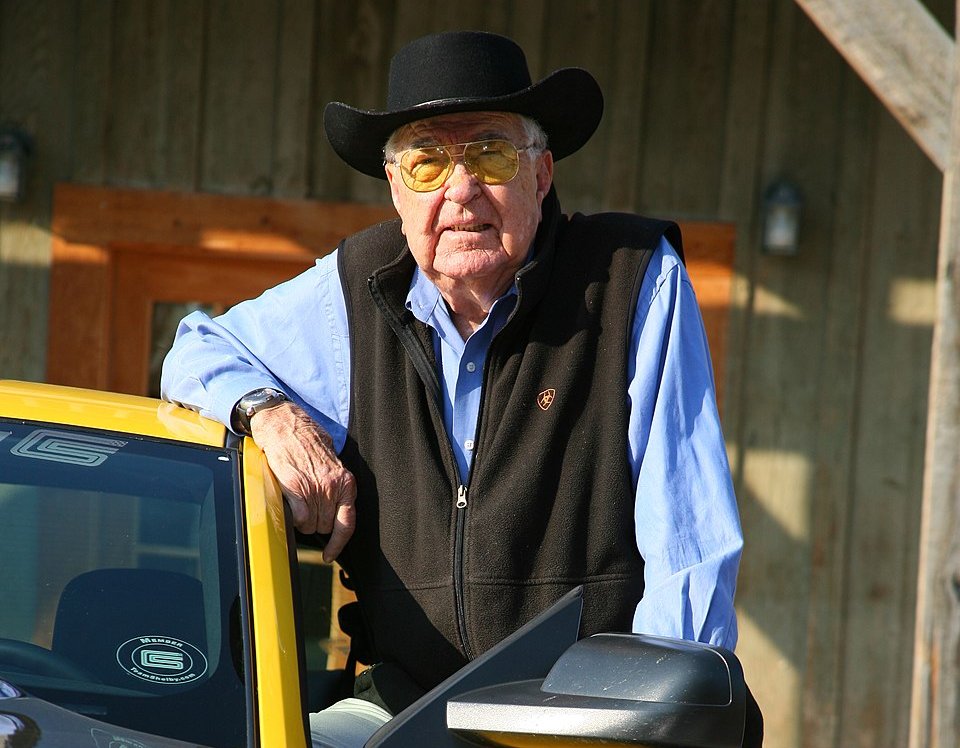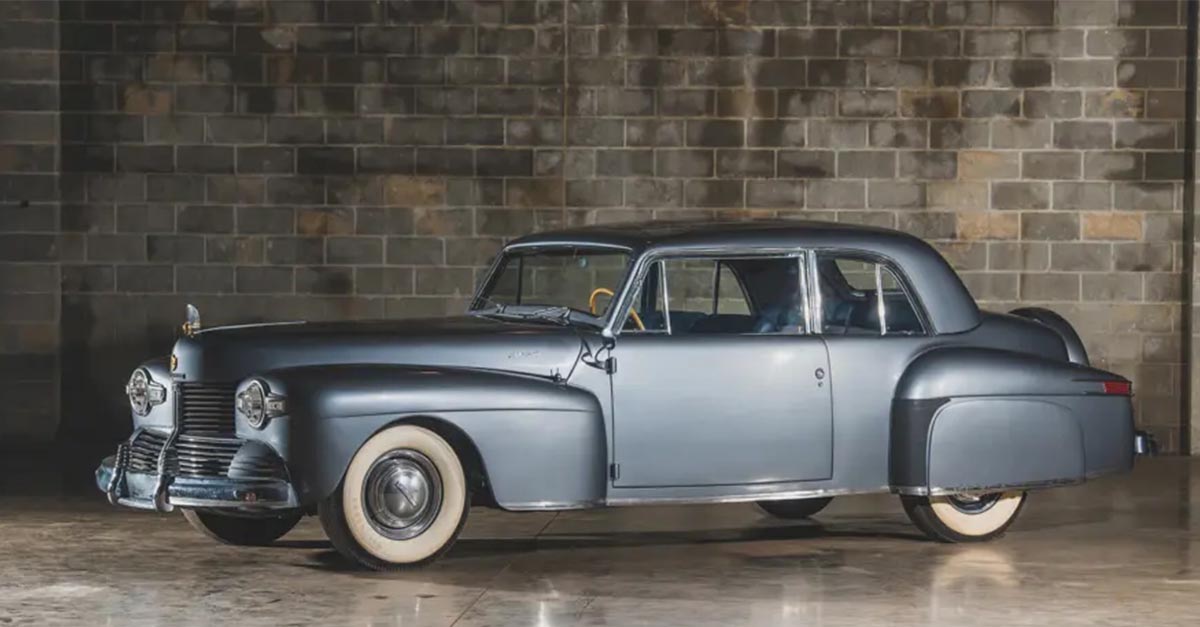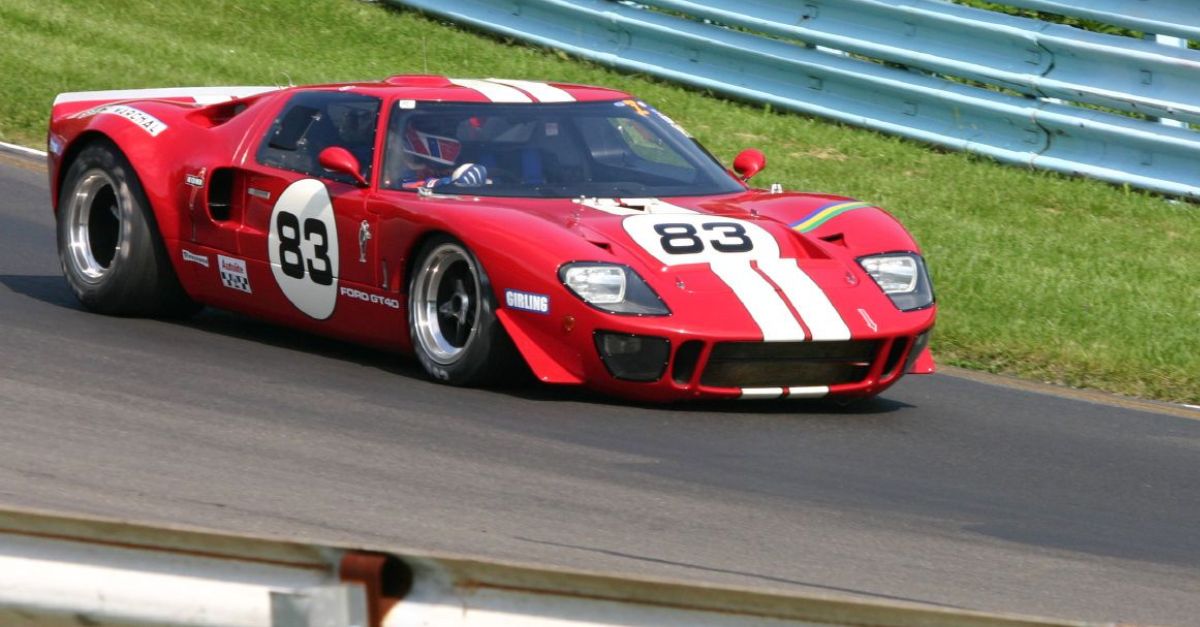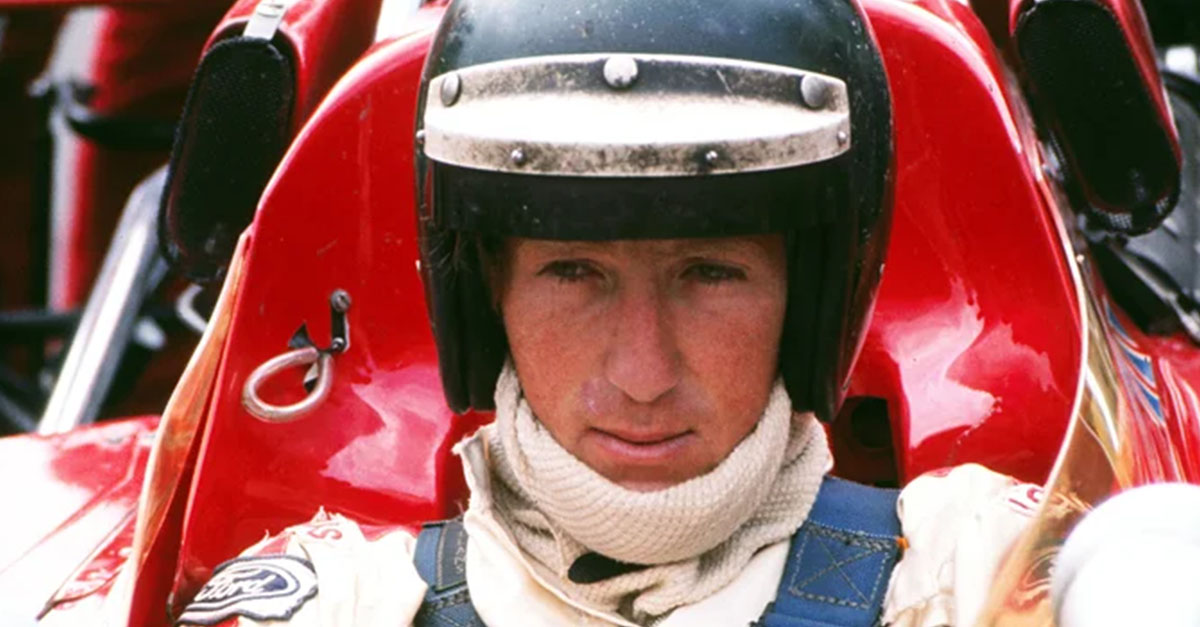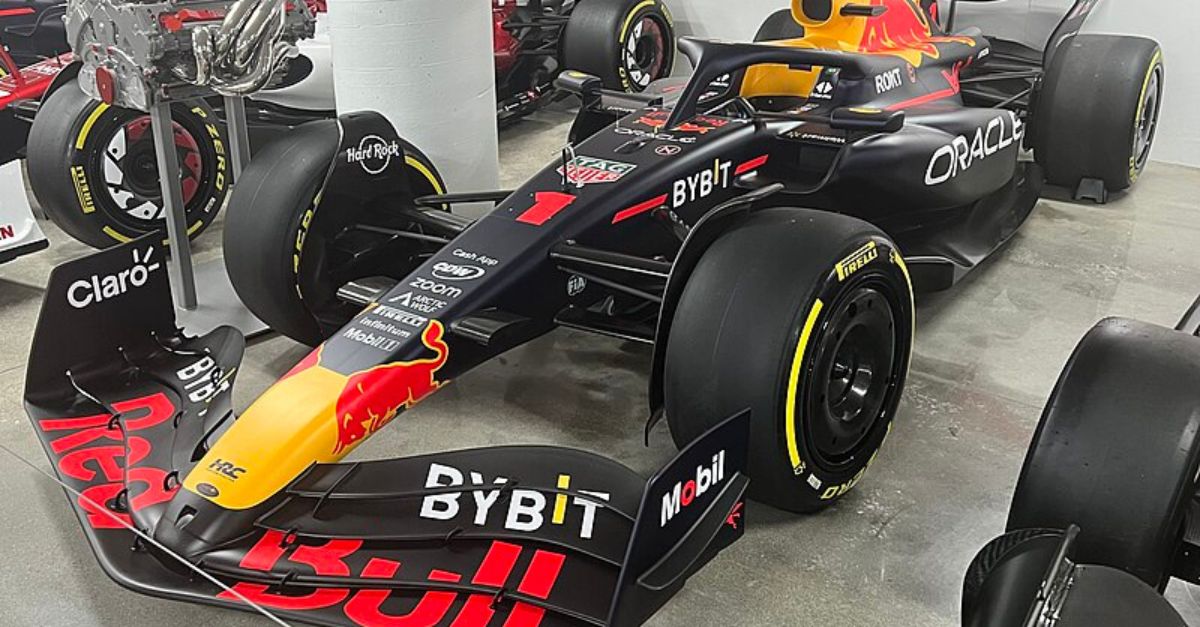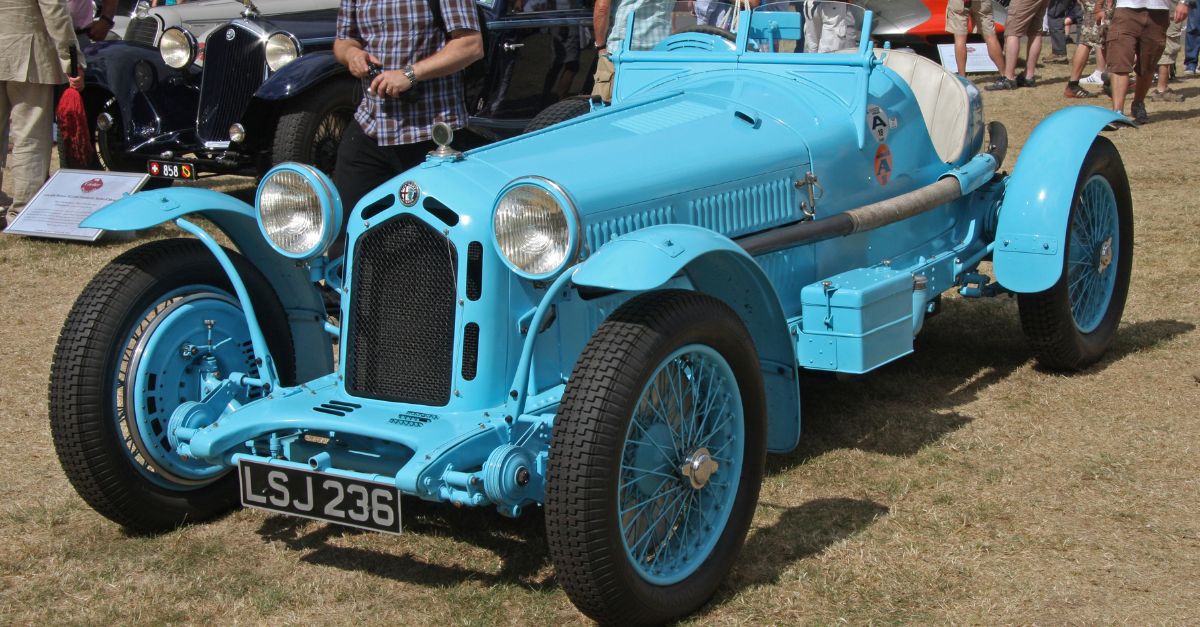Image Problem
Lee Iacocca had a problem. The consummate showman wanted to promote the Ford Mustang. But the new sports car’s performance wasn’t actually that great. So to boost its image, he turned to another man of boundless ambition: auto designer and ex-racing driver Carroll Shelby.
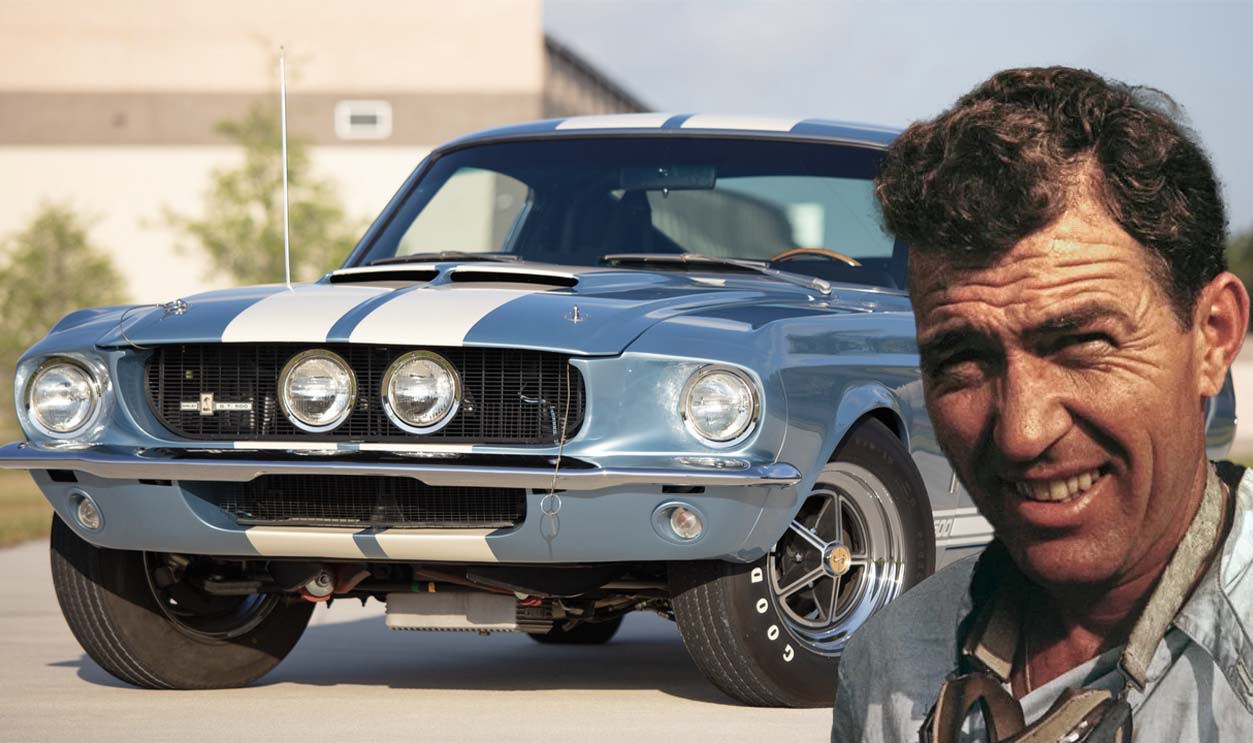
A Dubious Claim
The Ford vice-president talked up the Mustang at the 1964 New York World’s Fair, saying the new sports car would be “suitable for street use or competition”. But Iaccoca knew its performance fell short, so he asked Shelby to make a Mustang offering real racing cred.
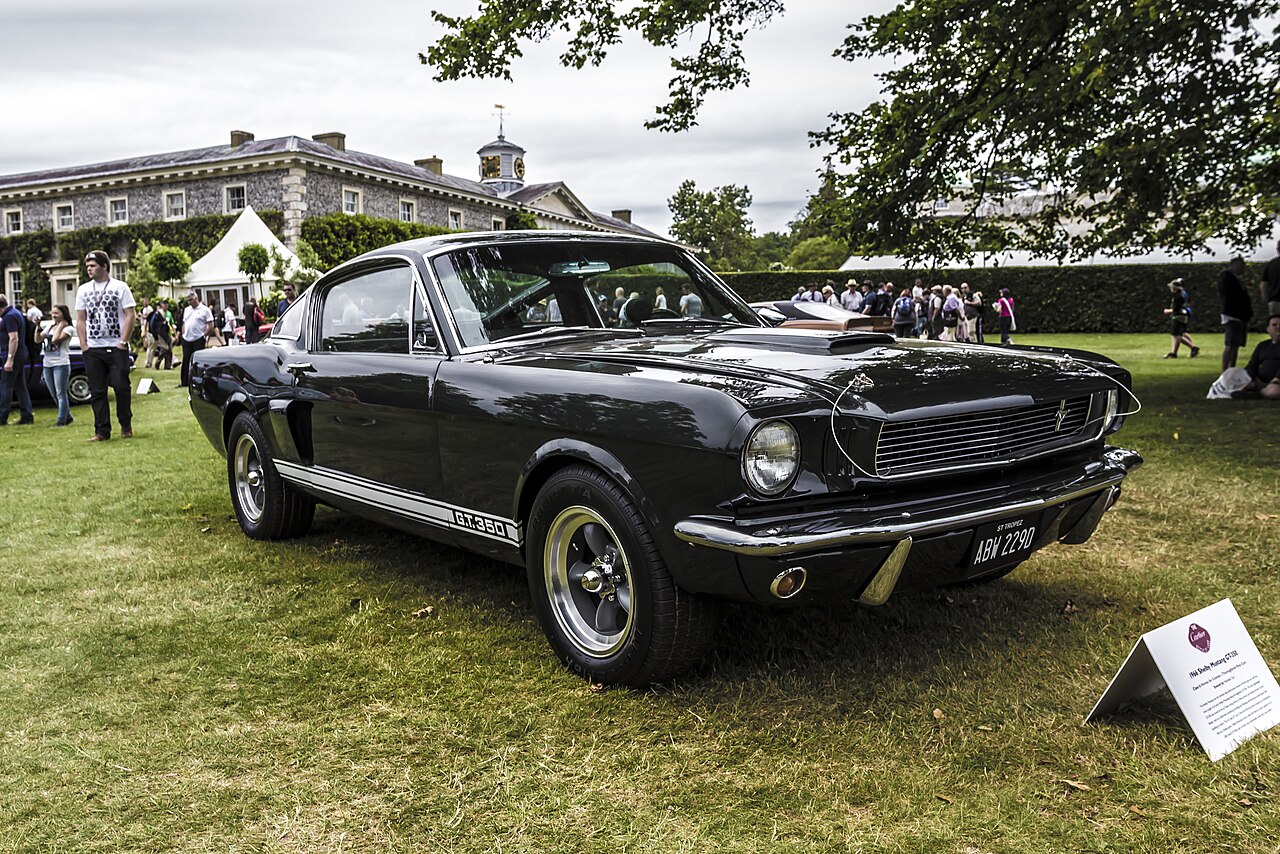 big-ashb, CC BY 2.0, Wikimedia Commons
big-ashb, CC BY 2.0, Wikimedia Commons
Cobra Success
Ford had already partnered with him to design the Shelby Cobra, which excelled at the 1963 SCCA championship. Then Shelby American won the deal to turbocharge the Ford Mustang, which would also be tagged with a Cobra emblem. But first, the Ford Mustang had to come out.
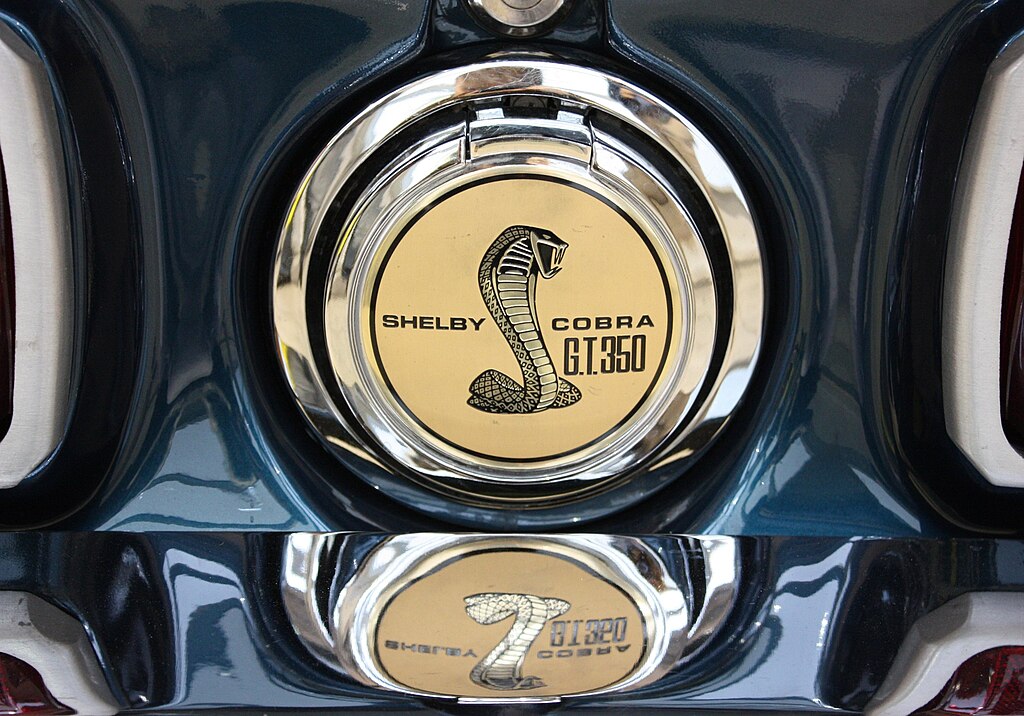 János Tamás, CC BY 2.0, Wikimedia Commons
János Tamás, CC BY 2.0, Wikimedia Commons
Engine Boost
The 1965 Ford Mustang was offered in various configurations, including an optional “GT Equipment Package,” usually featuring a 289 HiPo “K-code” V8 engine rated at 271 horsepower. Shelby swapped in a 4-barrel Holley 725 CFM carburetor to boost engine power to 306 hp.
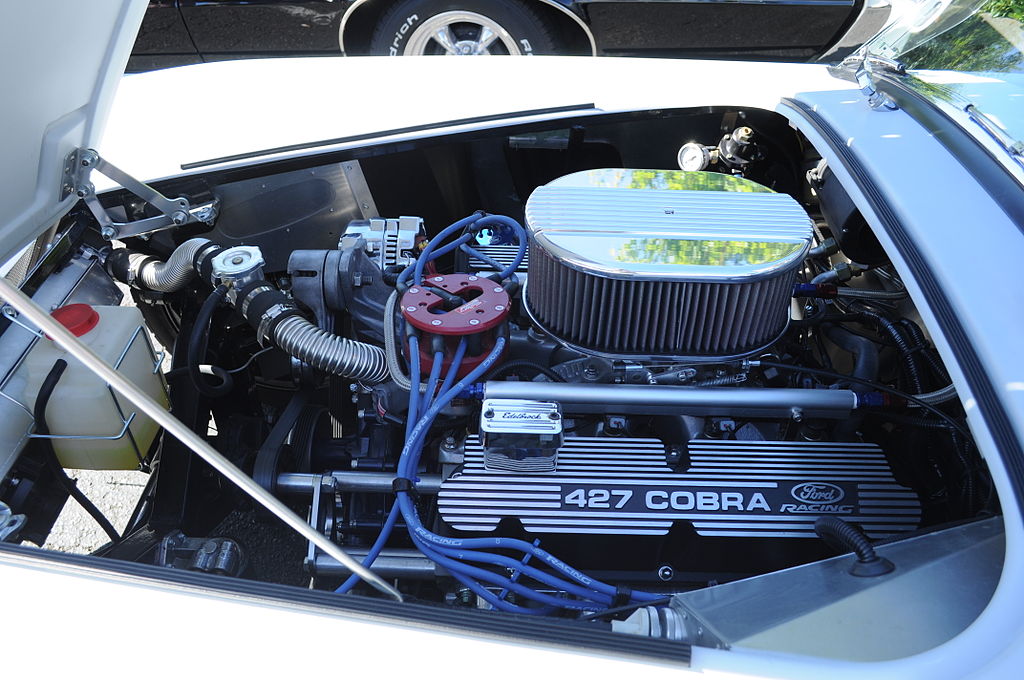 Joe Mabel, CC BY-SA 3.0, Wikimedia Commons
Joe Mabel, CC BY-SA 3.0, Wikimedia Commons
Introducing The GT350
The first model of the Shelby Mustang was called the GT350. Ford’s San Jose assembly plant would ship Mustangs with four-speed manual transmissions and nine-inch live rear axles to an aircraft hangar at LAX, where Shelby had moved from Venice, California, as production rose.
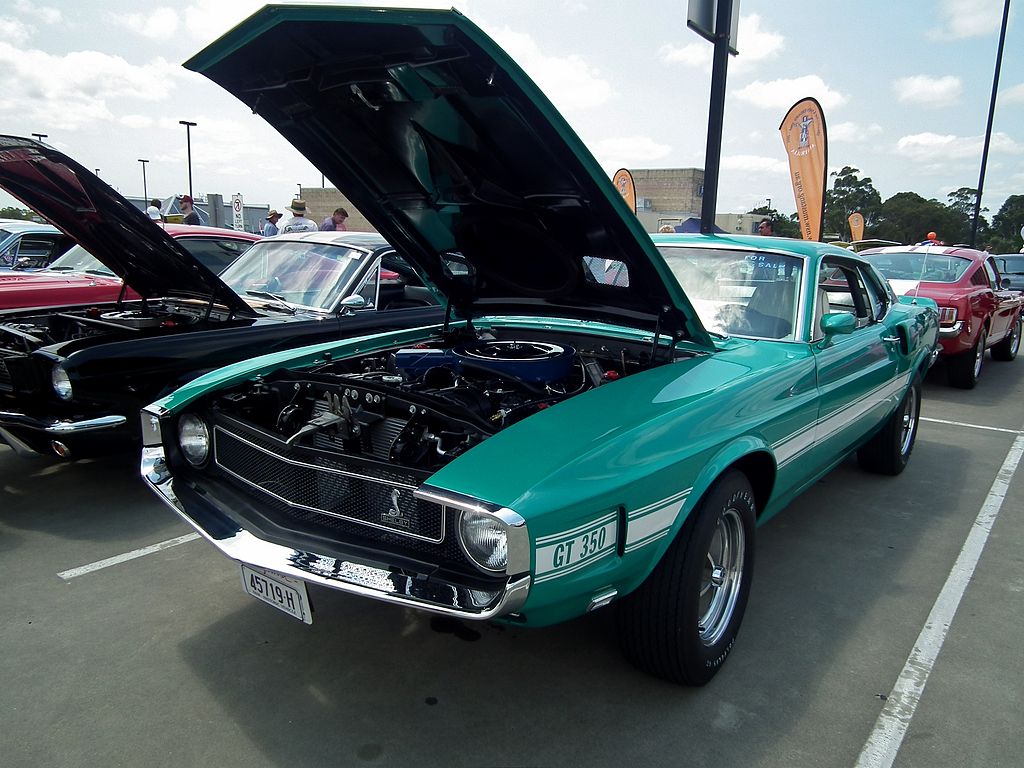 sv1ambo, CC BY 2.0, Wikimedia Commons
sv1ambo, CC BY 2.0, Wikimedia Commons
Cobra Hi-Riser
Besides the carburetor boost, Shelby workers would add a high-rise intake manifold to the engine, turning it into a “Cobra hi-riser”. Other additions were Tri-Y headers and better brakes: Ford Galaxie metal-lined drum brakes at the back, Kelsey-Hayes disc brakes at the front.
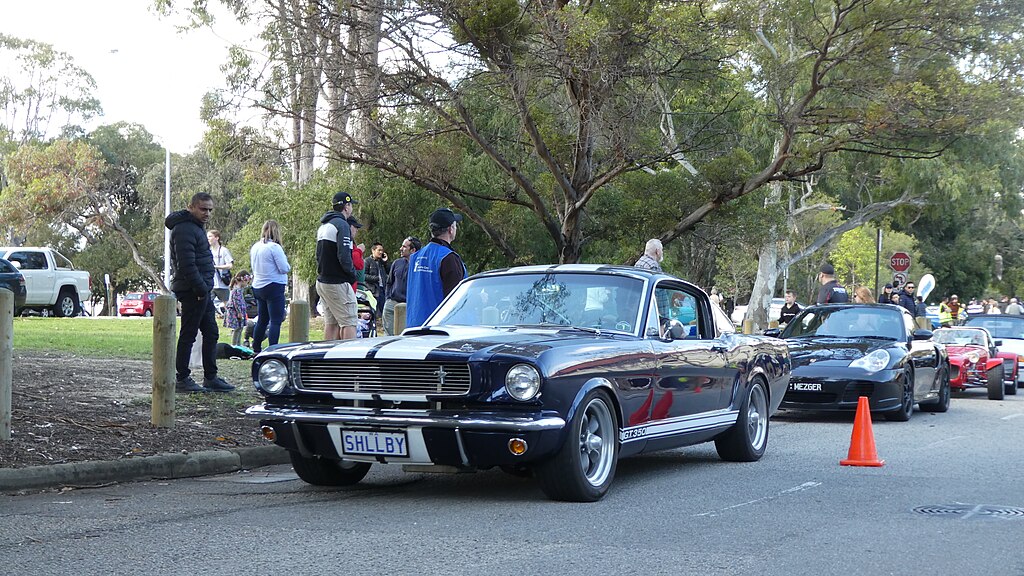 ZidaneHartono, CC BY-SA 4.0, Wikimedia Commons
ZidaneHartono, CC BY-SA 4.0, Wikimedia Commons
Definitely A Sports Car
To conform to SCCA’s definition of a “sports car,” a spare tire was put where the back seats would otherwise be, and all tires for the 1965 model used special Goodyear tires rated to 130 mph (210 km/h), featuring a big blue dot on the sidewall. And there was more blue to behold.
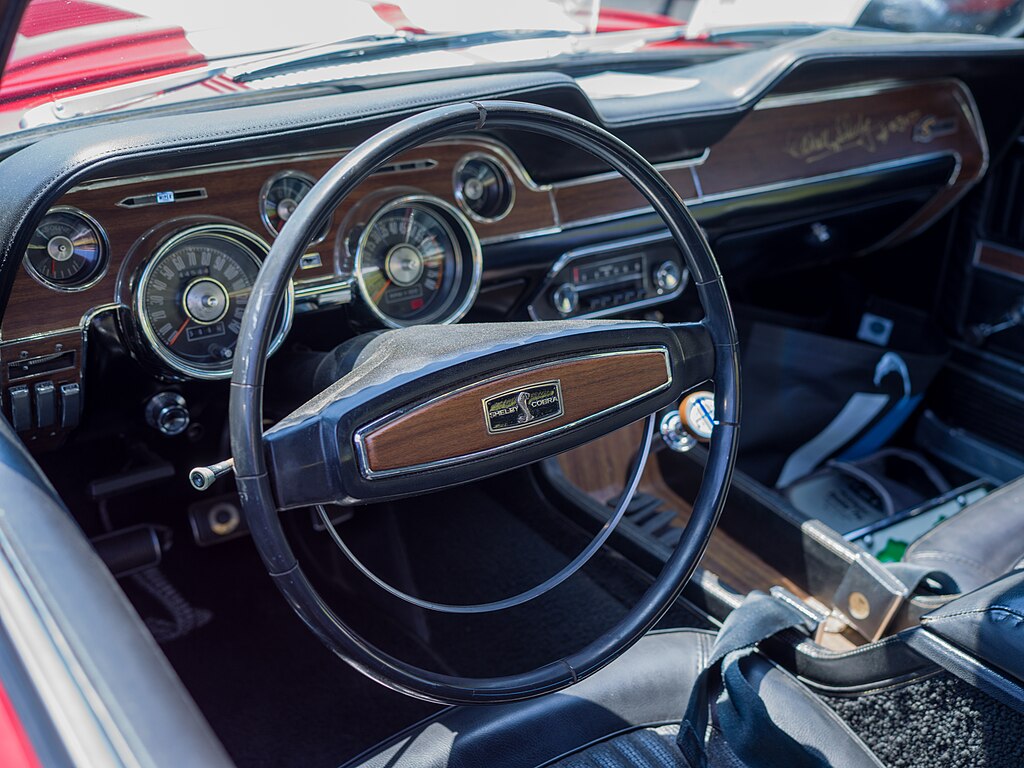 BUTTON74, CC BY-SA 4.0, Wikimedia Commons
BUTTON74, CC BY-SA 4.0, Wikimedia Commons
Big Bold Blue
Many of the cars had Le Mans stripes, a pair of broad blue lines covering the length of the car from hood to tail via the roof. They were so emblematic that many owners later added the same or similar lines to cars without them. And glasspack mufflers fed dual exhausts to the sides.
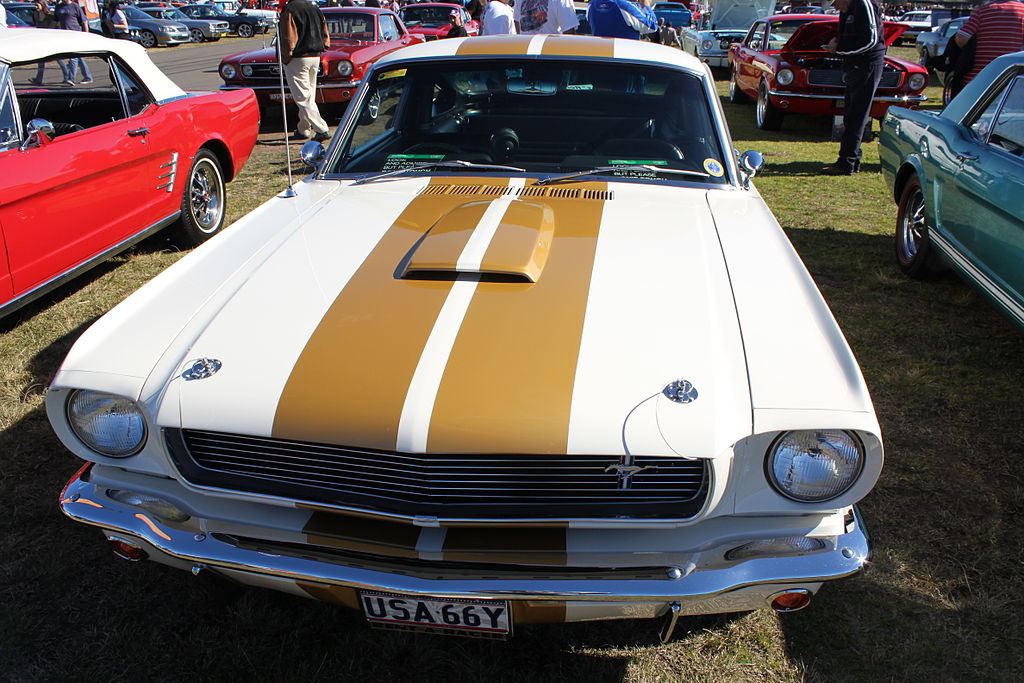 Jeremy, CC BY 2.0, Wikimedia Commons
Jeremy, CC BY 2.0, Wikimedia Commons
Love At First Sight
And it’s hard to imagine a more spectacular debut for the competition version, the GT350R, than Ken Miles’ race on Valentine’s Day 1965. Driving the prototype at an SCCA event at Green Valley Raceway, Miles’ performance made for an iconic image even before the finish line.
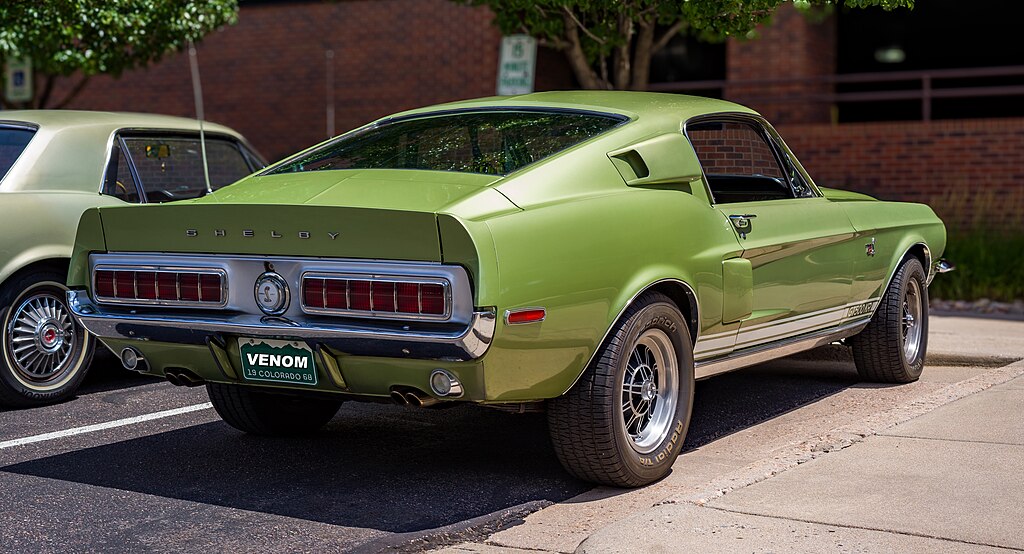 BUTTON74, CC BY-SA 4.0, Wikimedia Commons
BUTTON74, CC BY-SA 4.0, Wikimedia Commons
High Flyer
The car lifted itself off the ground, to the delight of photographers and spectators, and the “Flying Mustang” would stick in the minds of racing fans for a long time. With that kind of publicity, things were off to a great start. But something big was happening at the source.
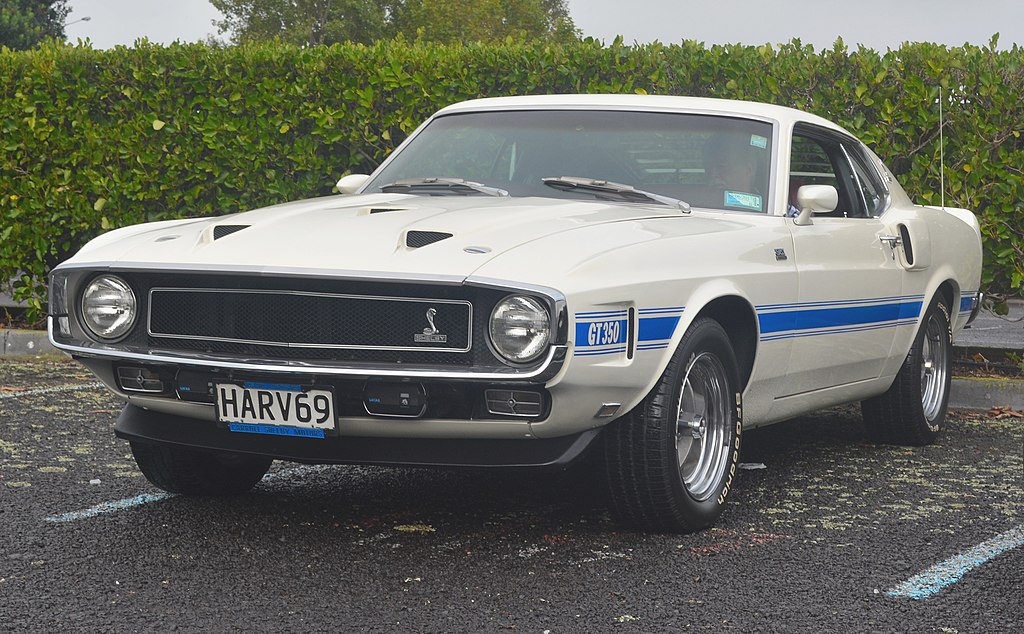 GPS 56, CC BY 2.0, Wikimedia Commons
GPS 56, CC BY 2.0, Wikimedia Commons
A Very Full 1964½
Ford released the Mustang during the 1964 model year, expecting to sell fewer than 100,000 by the end of the 1965 model year. But they reached that figure in three months—and within 18 months, a million Mustangs had galloped off the assembly line. But Iacocca had bigger sights.
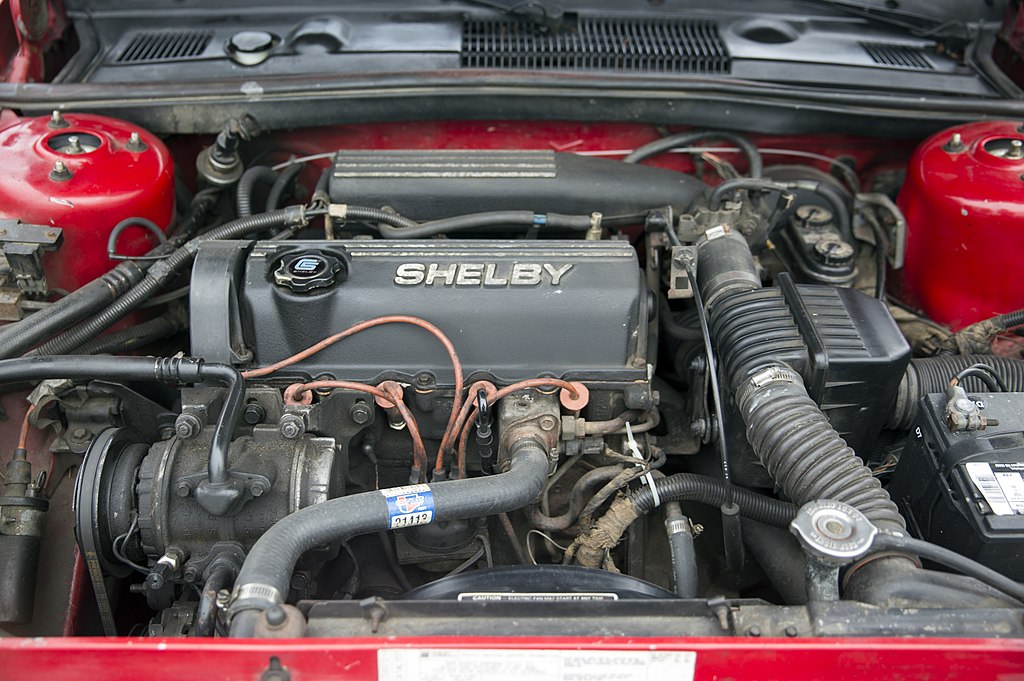 Mr.choppers, CC BY-SA 3.0, Wikimedia Commons
Mr.choppers, CC BY-SA 3.0, Wikimedia Commons
Total Ambition
Iacocca was doubtless happy about the Ford Mustang sales. He’d been a champion for what would become known as the first “pony car” to Baby Boomers holding on to their dreams of youth. But Ford’s slogan was “Total Performance,” which included race-track performance.
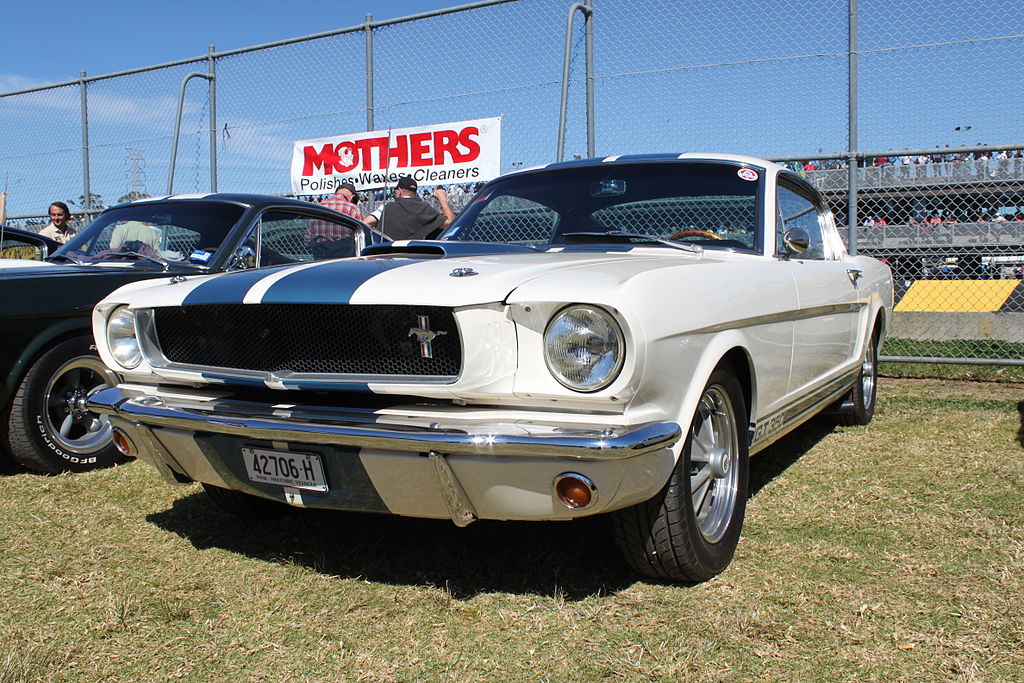 Jeremy, CC BY 2.0, Wikimedia Commons
Jeremy, CC BY 2.0, Wikimedia Commons
More Than A Sales Race
So Iaccoca struck a deal, first for the Shelby Cobra, and then the Shelby Mustang. Nothing would spell “sports car” like credibility with the SCCA—the Sports Car Club of America. And Iacocca knew full well how the Chevrolet Corvette was doing, so the race really was on.
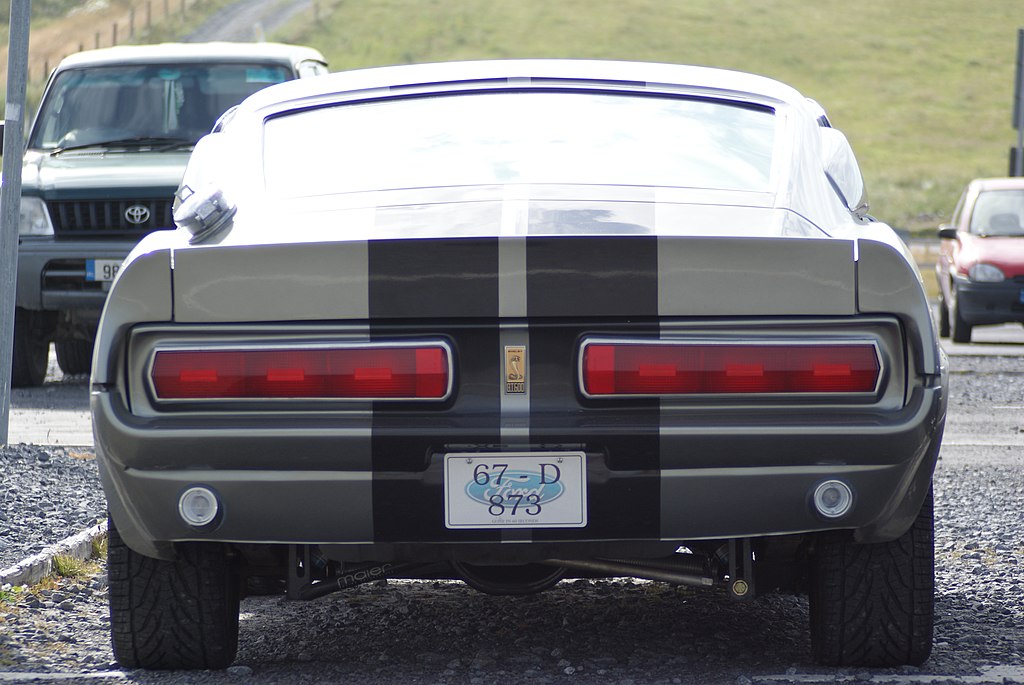 Tadekptaku, CC BY-SA 4.0, Wikimedia Commons
Tadekptaku, CC BY-SA 4.0, Wikimedia Commons
Shelby Cachet
For the 1966 model year, “Mustang” was dropped, and the car was simply called the Shelby GT350. Buyers had the option of getting a Paxton supercharger that boosted the engine to 440 hp. Sales rocketed to 2,378, partly because Ford cajoled Hertz into buying some 1,003 of the cars.
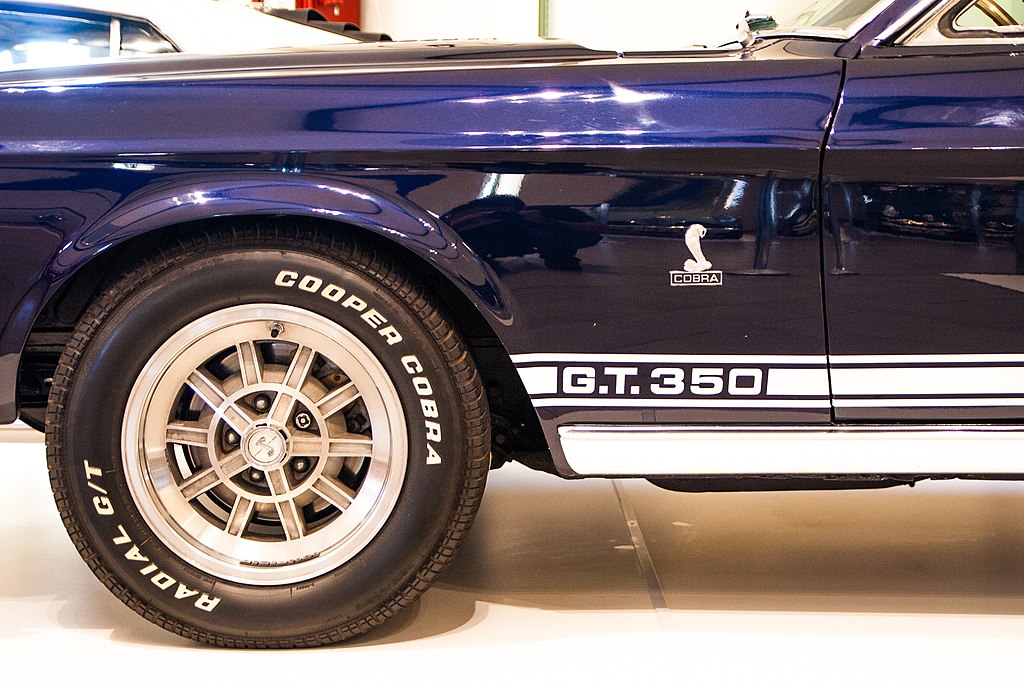 naeem mayet, CC BY 2.0, Wikimedia Commons
naeem mayet, CC BY 2.0, Wikimedia Commons
Rent A Racer
Some 85 of the Hertz vehicles had four-speed manual transmissions and were touted as “Rent-a-Racer” cars. People would rent a Shelby Mustang and enter them into SCCA races, sometimes after welding in a roll bar. But already a “larger” problem was developing.
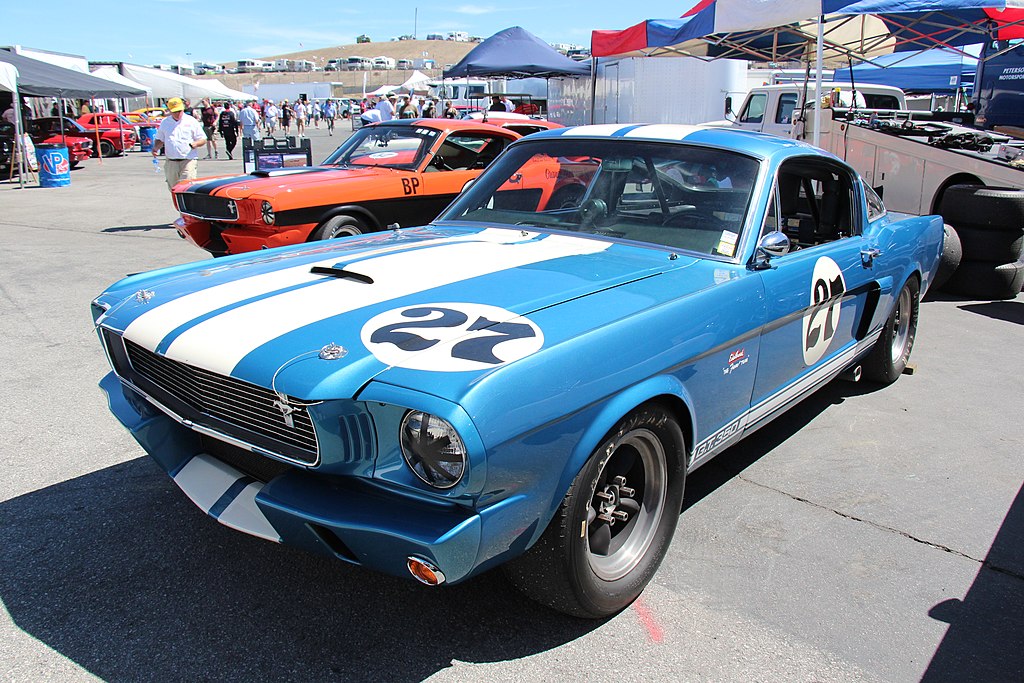 Sicnag, CC BY 2.0, Wikimedia Commons
Sicnag, CC BY 2.0, Wikimedia Commons
Heavy Issue
The 1966 model offered more comfort and more options, making it bigger and heavier. This trend would continue, ironically undermining the whole point of developing these models, which was to emphasize performance. But Shelby American would soon face even bigger problems.
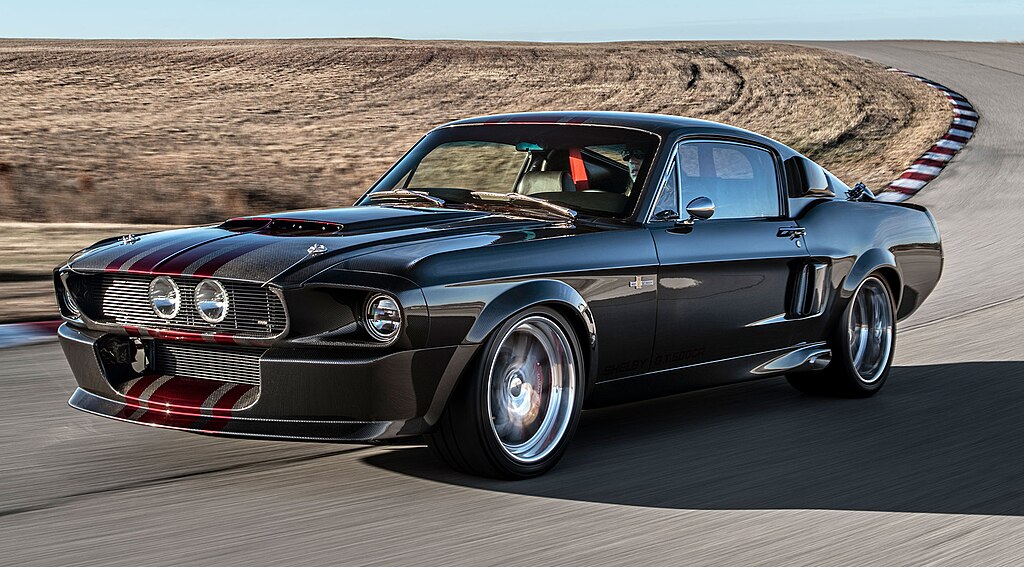 Classic Recreations, CC BY 4.0, Wikimedia Commons
Classic Recreations, CC BY 4.0, Wikimedia Commons
Double Trouble
The 1967 Shelby GT350 again used the K-Code 289 (289 cubic inches or 7.0 liters), and was joined by a brand-new GT500. It used an Interceptor V8 engine with the same displacement, and a pair of 600 CFM Holley four-barrel carburetors. And Carroll Shelby achieved a big design goal.
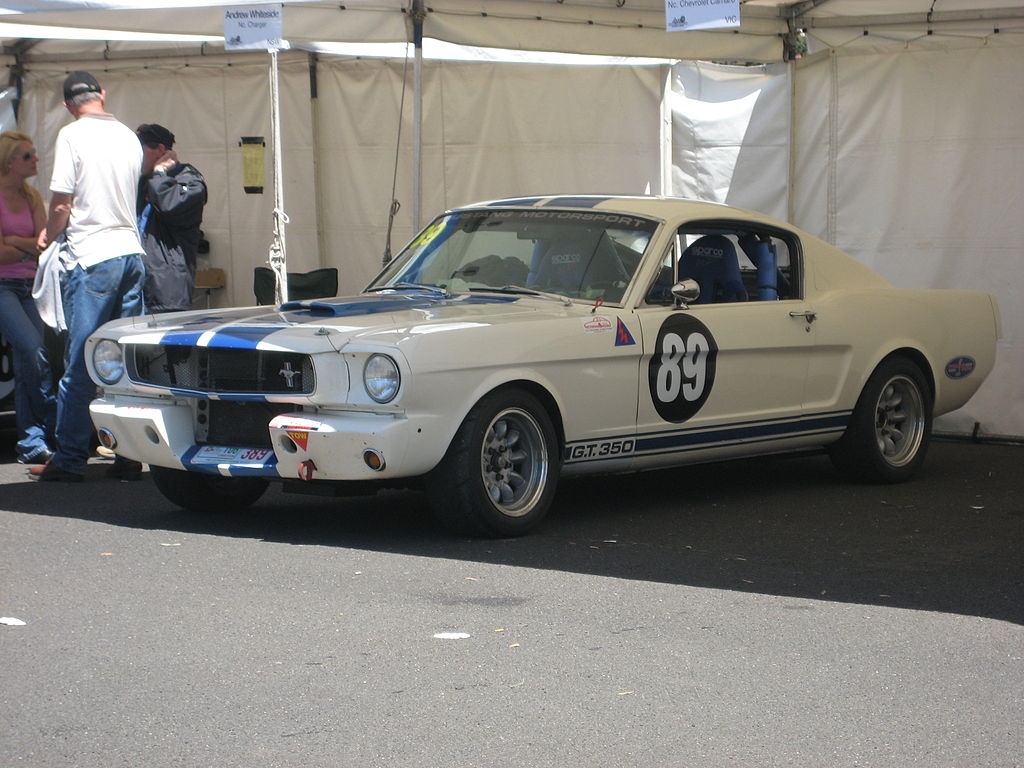 Sicnag, CC BY 2.0, Wikimedia Commons
Sicnag, CC BY 2.0, Wikimedia Commons
Its Own Look
Carroll Shelby wanted his Mustang’s look to stand out from the original Ford design. He finally got there by stretching the hood and adding high-beam headlamps in the grille and a thin chrome bumper in the front. But even as he triumphed, Shelby was facing disaster.
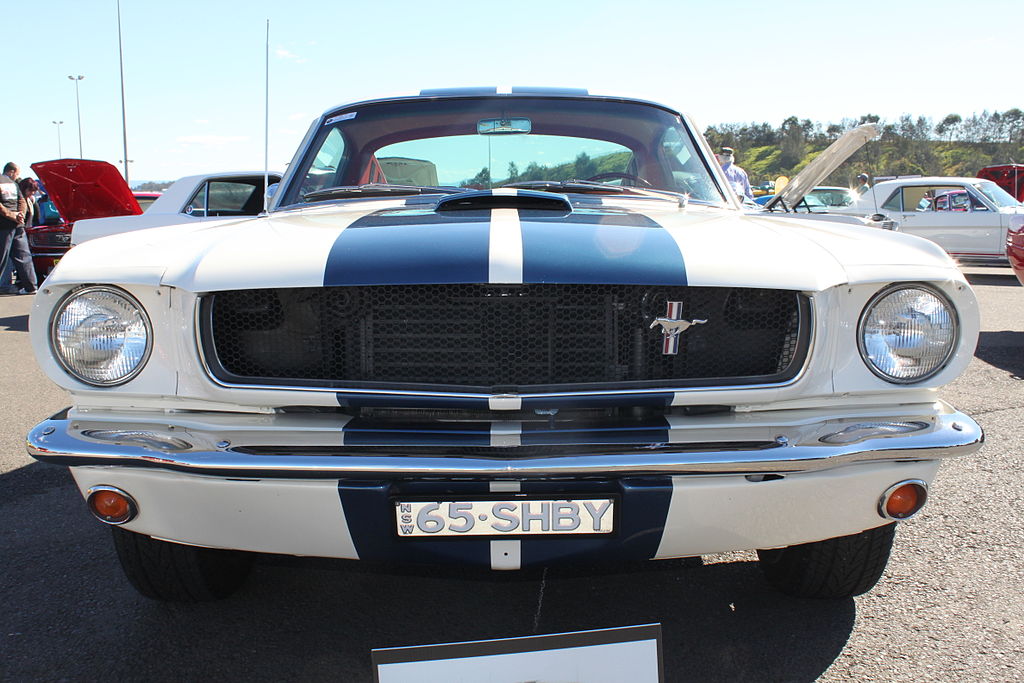 Jeremy, CC BY 2.0, Wikimedia Commons
Jeremy, CC BY 2.0, Wikimedia Commons
Production Trouble
Shelby American was having trouble on the production line. Cash problems meant supplies were late, and when they arrived, fiberglass components weren’t fitting properly. Ford delayed a Shelby convertible amidst the chaos, and realized tougher action would be required.
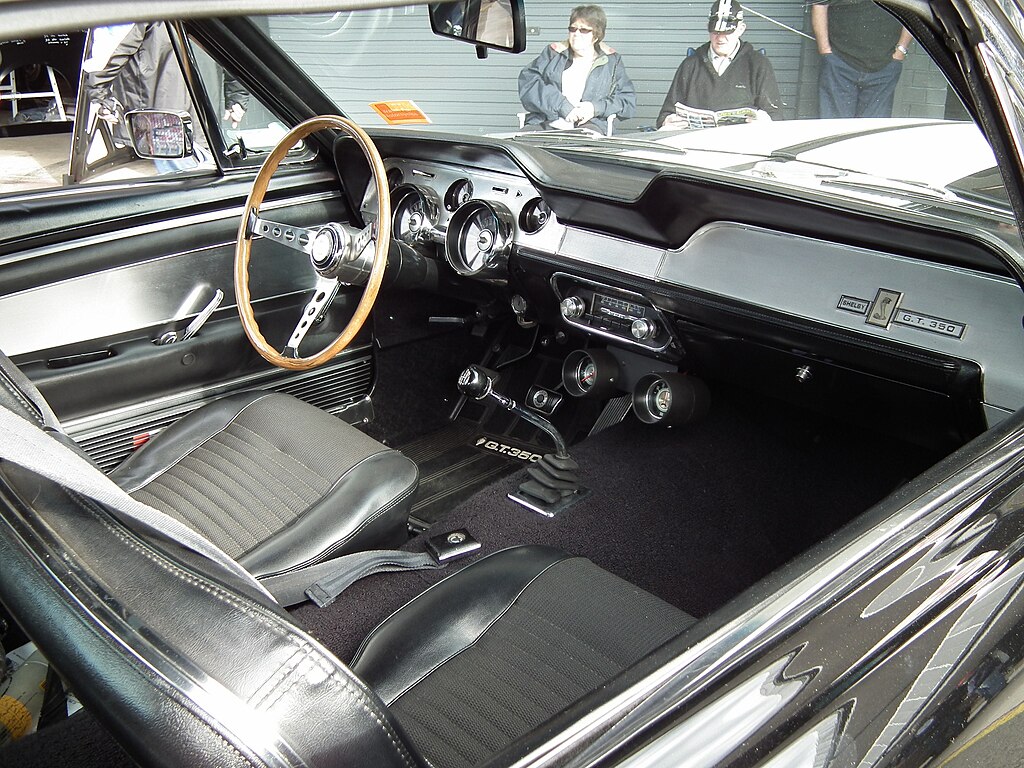 sv1ambo, CC BY 2.0, Wikimedia Commons
sv1ambo, CC BY 2.0, Wikimedia Commons
Ford Takes Over
In the fall of 1966, Ford took over engineering and purchasing responsibilities. They also outsourced the fiberglass issue. Then Ford shuttered the California operation altogether. A few employees were transferred to Ionia, Michigan, but Shelby American was largely sidelined.
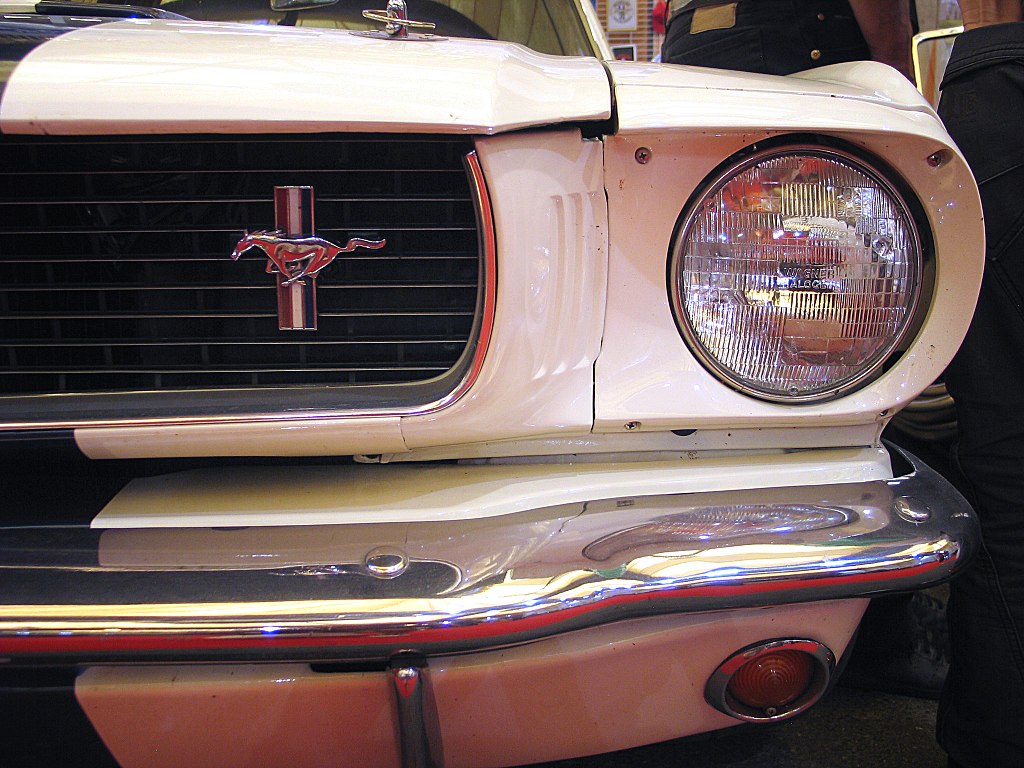 Falcon, CC BY-SA 2.0, Wikimedia Commons
Falcon, CC BY-SA 2.0, Wikimedia Commons
Special Editions
Yet, Shelby cars survived, as did special runs. 26 Mustang coupes were made to meet FIA’s Group 2 specs, allowing them to enter SCCA A-Sedan races. They also could race in the Trans-Am series, which had complicated rules about rear seats. Next came a name change.
 TaurusEmerald, CC BY-SA 4.0, Wikimedia Commons
TaurusEmerald, CC BY-SA 4.0, Wikimedia Commons
Dropping The Mustang
The Shelby Mustang, which had become just Shelby, would now be called the Shelby Cobra. That name had been used for Carroll Shelby’s earlier collaboration with Ford for cars that were first sold in 1962. There would be changes under the hood, too, for the two 1968 models.
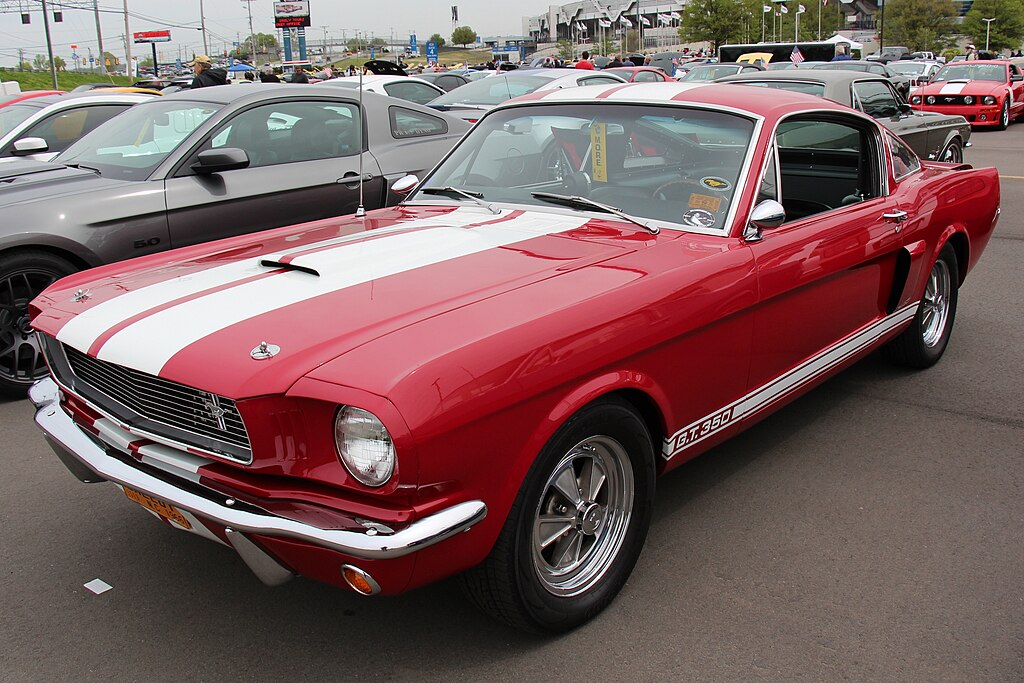 Sicnag, CC BY 2.0, Wikimedia Commons
Sicnag, CC BY 2.0, Wikimedia Commons
Riding The Cobra Jet
Ford had discontinued its K-code engine, so the Shelby Cobra GT350 would now use a hydraulic 302 V8 that could put out 230 hp. The GT500 would be the first to use a 428 engine called the Cobra Jet, with a special 16-bold exhaust flange and officially providing 335 hp.
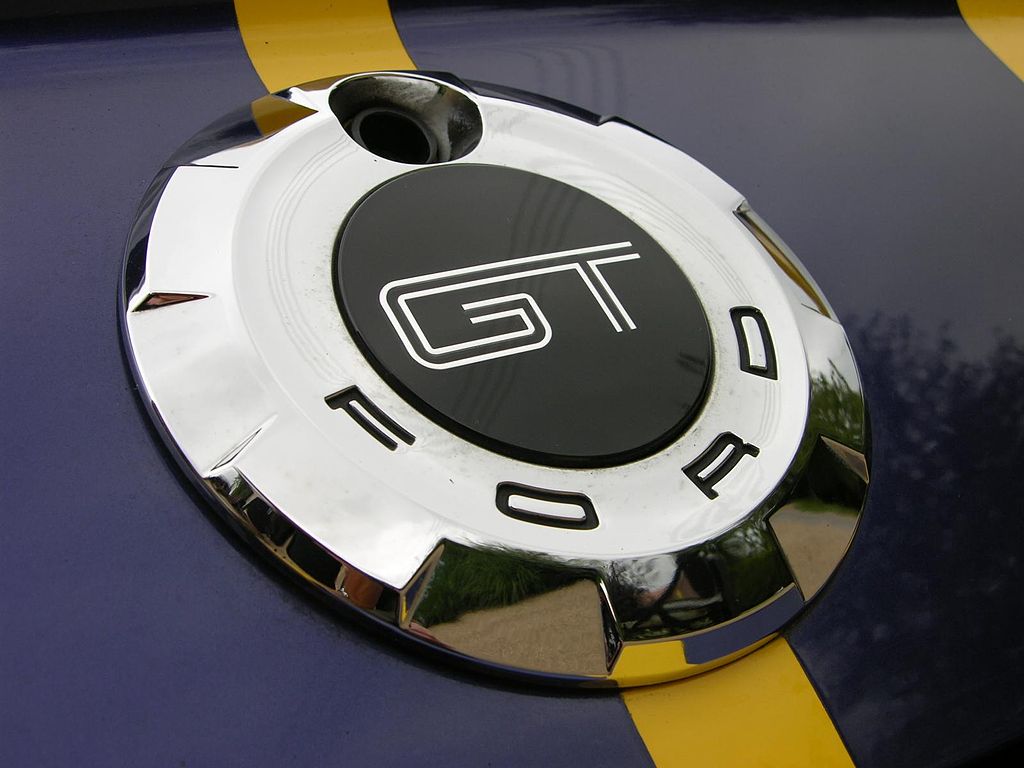 The Car Spy, CC BY 2.0, Wikimedia Commons
The Car Spy, CC BY 2.0, Wikimedia Commons
King Of The Road
The model became known as the GT500KR, the “KR” representing the humble claim that this model was “King of the Road”. However, the brag was dropped the next year, as was the Cobra tag. Carroll Shelby had no major part in designing these models. And then there were the VINs.
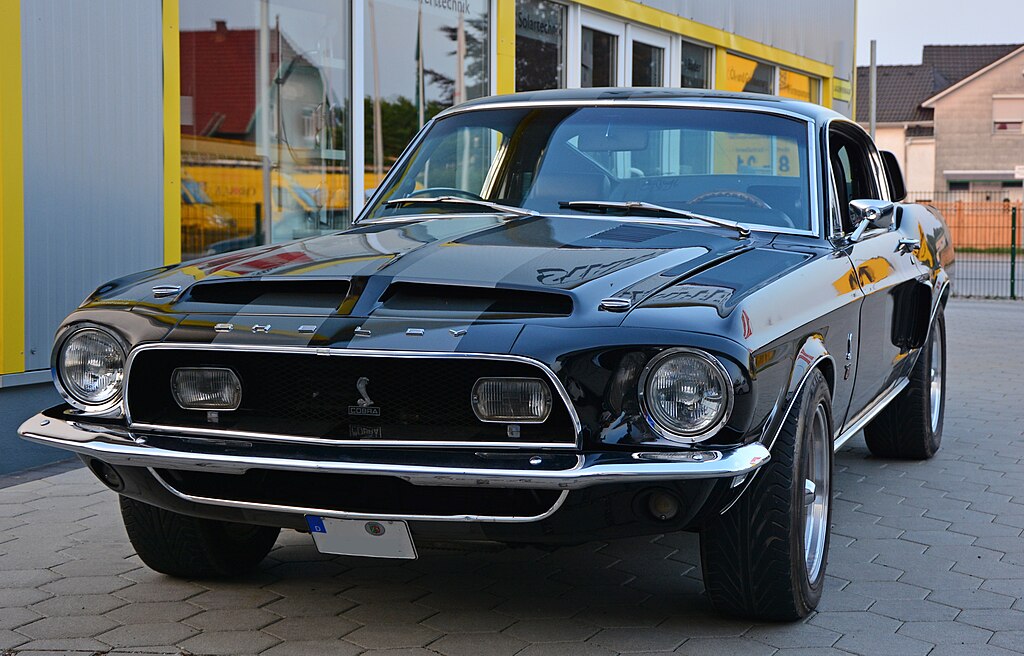 Huhu Uet, CC BY 3.0, Wikimedia Commons
Huhu Uet, CC BY 3.0, Wikimedia Commons
Sales Problem
The GT350 for 1969 had a 351 cubic inch (5.8 liter) Windsor V-8, while the GT500 used a 428 cu in (7.0 liter) FE V-8. The bodies got stretched out, increased by 4-10 inches (100-250 mm). And sales must have been underwhelming, as lots of 1969 cars were sold as 1970 models.
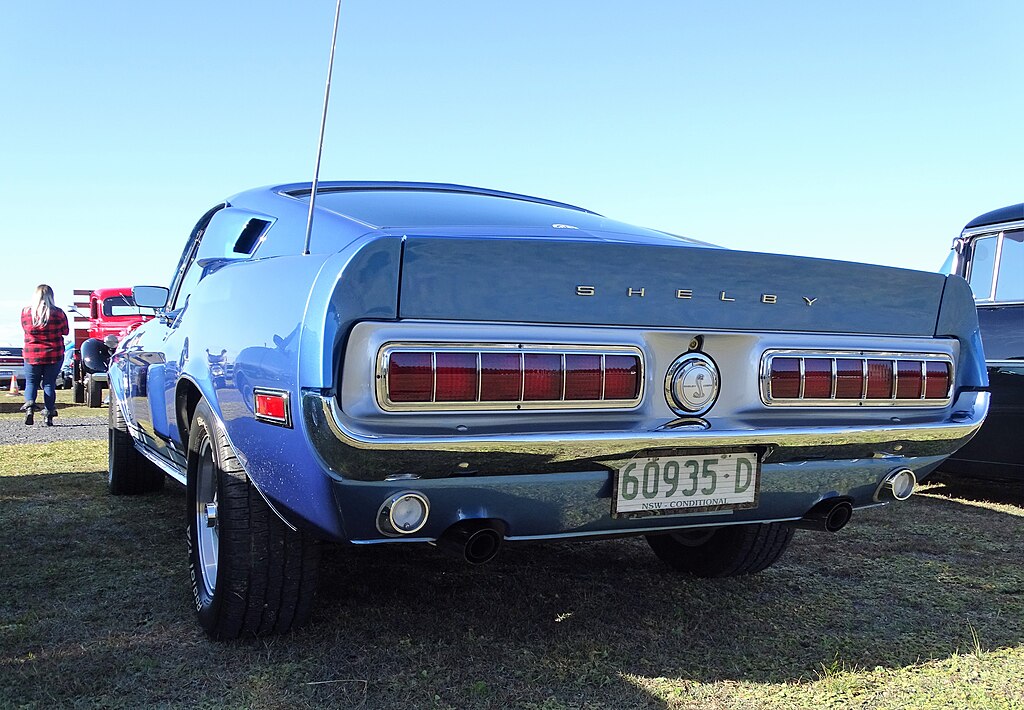 FotoSleuth, CC BY 2.0, Wikimedia Commons
FotoSleuth, CC BY 2.0, Wikimedia Commons
Time Shift
Carroll Shelby ended his deal with Ford in the summer of 1969—and no new cars were made for 1970. Ford made cosmetic changes to existing cars and tweaked things to meet emission rules, and then under the watchful eye of the FBI, changed 789 VINs. A chapter was about to close.
 János Tamás, CC BY 2.0, Wikimedia Commons
János Tamás, CC BY 2.0, Wikimedia Commons
Ending The Chapter
But there were still a few Shelby Mustangs yet to come! A Belgian dealer took delivery of nine Ford Mustangs and modified them to produce the last GT-350 and GT-500 Mustangs of the era. These 1971 Shelby Europas closed the chapter on the Shelby Mustang. But let’s fast forward.
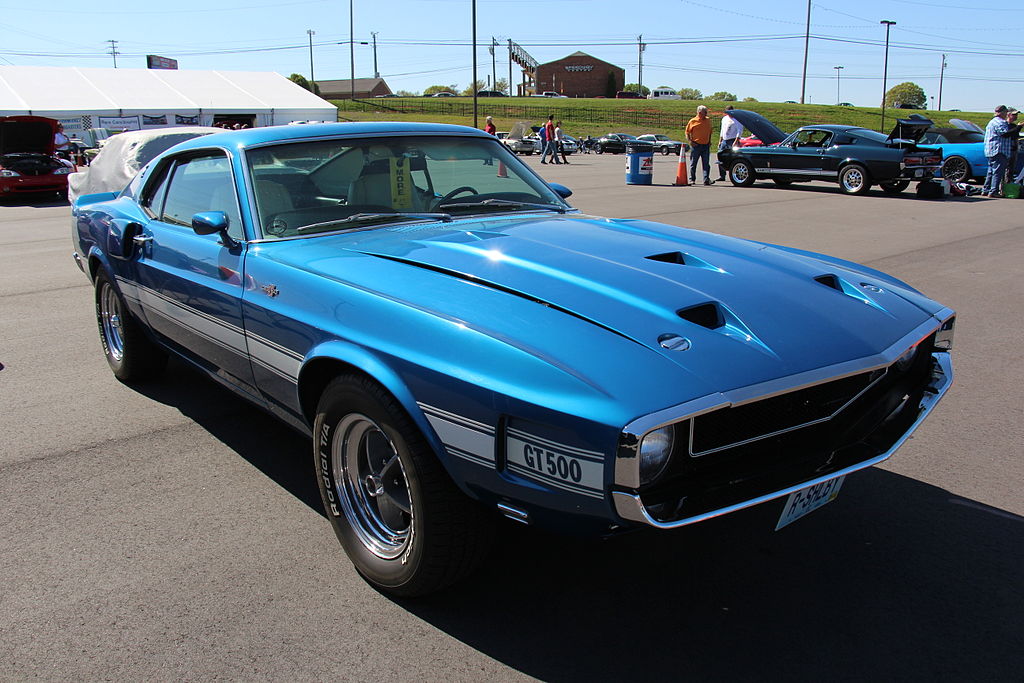 Sicnag, CC BY 2.0, Wikimedia Commons
Sicnag, CC BY 2.0, Wikimedia Commons
Supercharged To Be Back
Paxton Automotive had supplied superchargers as an option for both Ford Mustangs and the Shelby variant. In 2005, Paxton collaborated with Shelby to create a second-generation car based on the V6 Ford Mustang, producing 350 hp. A 4.6-liter V8 version was made too.
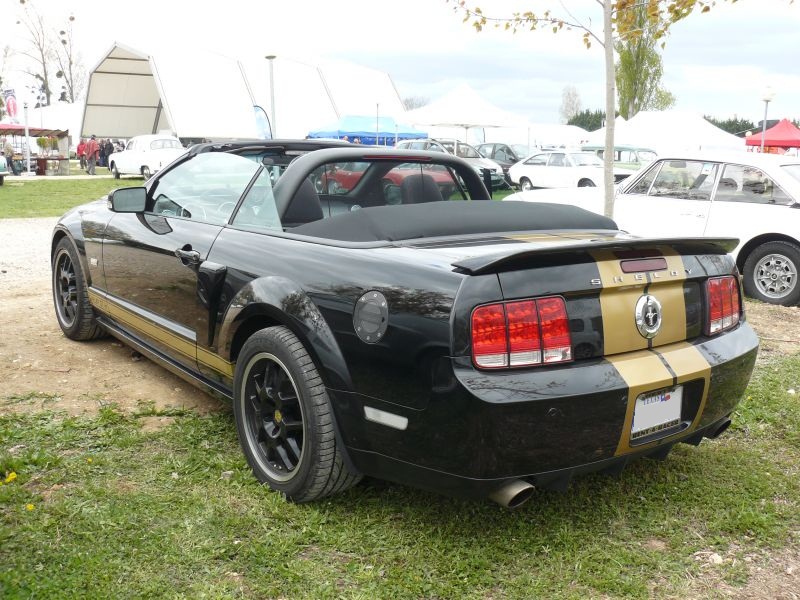 Lebubu93, CC BY-SA 3.0, Wikimedia Commons
Lebubu93, CC BY-SA 3.0, Wikimedia Commons
Rent A Revival
But “made” is a bit misleading. Shelby sold kits so owners could make the modifications on their own. But it was a short-lived effort, as an old client made a reappearance. Heading to a Hertz rental outlet would be the one and only way to drive a Shelby GT-H, which came out in 2006.
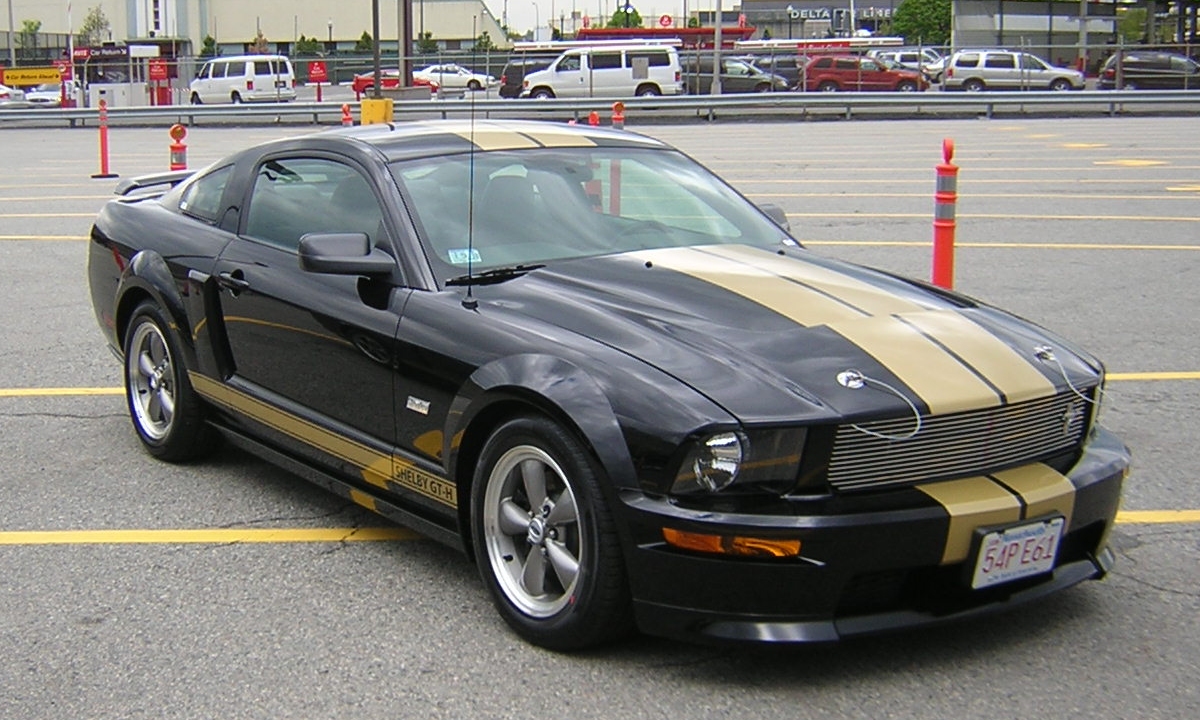 Lar, CC BY-SA 3.0, Wikimedia Commons
Lar, CC BY-SA 3.0, Wikimedia Commons
Flashback
Introduced 40 years after the original Hertz-only GT350H, the new model used Ford’s FR1 Power Pack to boost the powertrain by 25 hp, added cold air and muffler kits, and replaced the X-pipe. Hertz later offered convertibles too, with the light bar flashing back to the 1968 model.
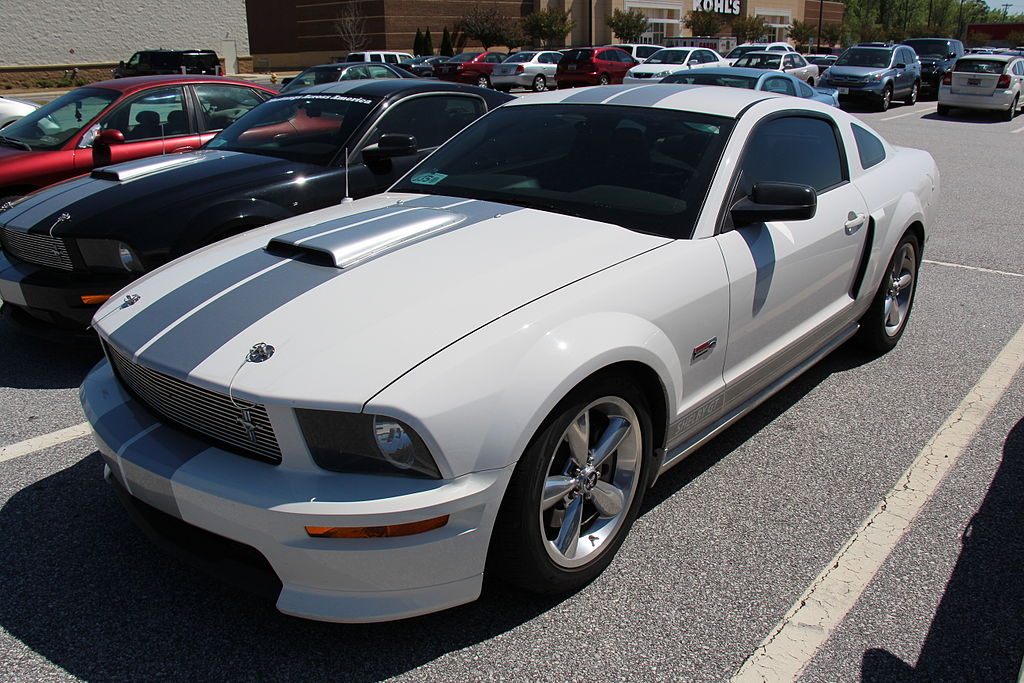 Sicnag, CC BY 2.0, Wikimedia Commons
Sicnag, CC BY 2.0, Wikimedia Commons
Public Offering
But Ford didn’t stop there. They then offered the 2007 and 2008 Ford Shelby GT to the public, completed at Shelby Automobile’s Arizona workshop. They were similar to the GT-H, but with the option for a manual transmission thrown in. This new generation evolved until 2014.
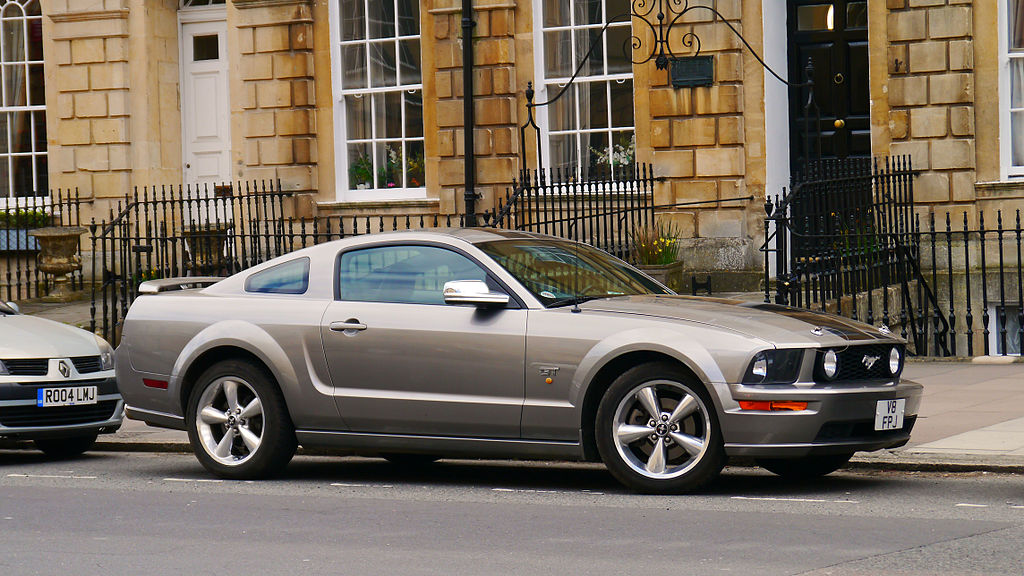 Mic, CC BY 2.0, Wikimedia Commons
Mic, CC BY 2.0, Wikimedia Commons
End Of Another Chapter
The 2014 Shelby GT and Shelby GT/SC closed out the second generation. Based on the 2014 Ford Mustang GT, it offered a GT500 rear spoiler and quarter glass covers, a lighter fiberglass hood, and stylish Le Mans stripes completed the look. Power ranged from 430 hp to 624 hp.
 Alexandre Prévot, CC BY-SA 2.0, Wikimedia Commons
Alexandre Prévot, CC BY-SA 2.0, Wikimedia Commons
In Your Face
The third generation opened with the 2015 Shelby GT, with manual or automatic transmission. By this time, the Ford Mustang was in its sixth generation. The GT had an “aggressive” carbon fiber hood and rockers, along with cold-air intakes and 20-inch WELD Venice wheels.
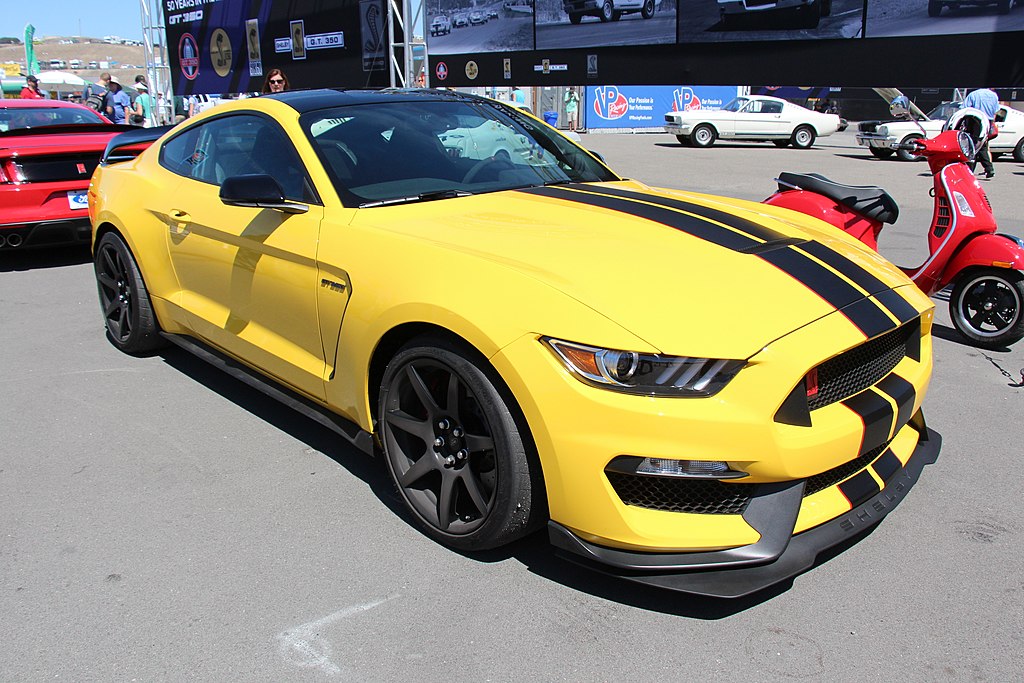 Sicnag, CC BY 2.0, Wikimedia Commons
Sicnag, CC BY 2.0, Wikimedia Commons
Coyote Power
The 2015 Shelby GT offered a 5.0-liter Coyote supercharged V8, while the Ecoboost option offered better suspension and boosted the engine to 335 hp. The exhaust system made its presence known, and handling was improved. On the outside were further carbon fiber tweaks.
 V8powerage, CC BY-SA 4.0, Wikimedia Commons
V8powerage, CC BY-SA 4.0, Wikimedia Commons
On Track
Auto chroniclers also identify a special Ford Performance third-generation Shelby GT350 that lasted from 2015 to 2020. Featuring a 5.2-liter Voodoo V8 and a Tremec TR-3160 six-speed manual transmission, it offered 526 horsepower and was very much oriented toward the race track.
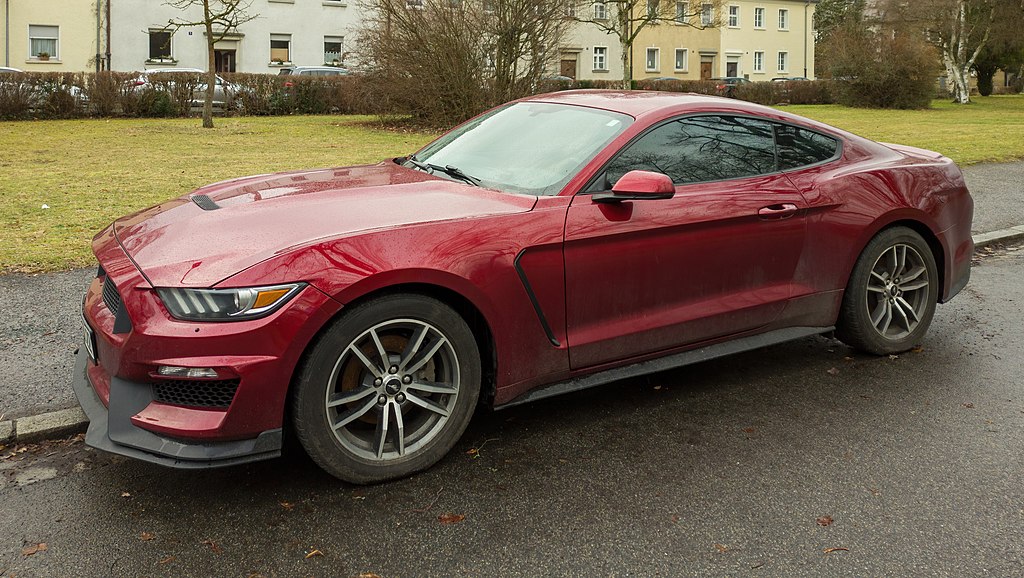 Reinhold Möller, CC BY-SA 4.0, Wikimedia Commons
Reinhold Möller, CC BY-SA 4.0, Wikimedia Commons
A Powerful Predator
And there’s also a Ford Performance third-generation Shelby GT500 that was on offer from 2020 to 2022. Its 5.2-liter Predator V8 came with a seven-speed dual-clutch transmission and 760 hp. A signature edition offered 40 more hp. But you say you need even more?
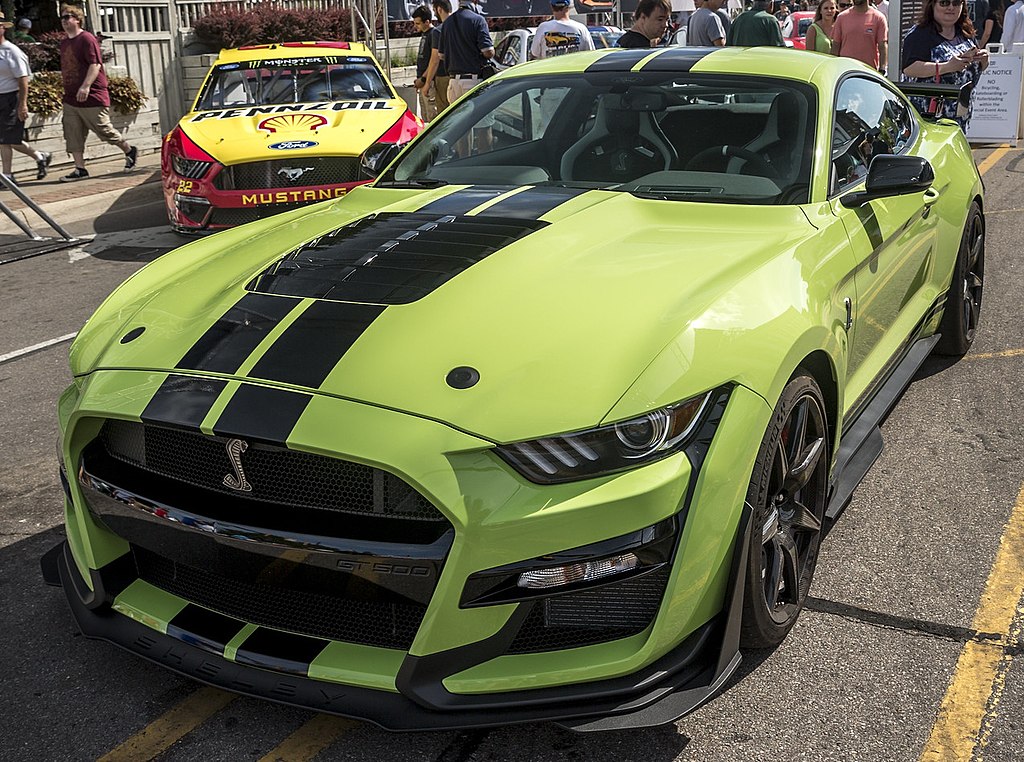 Joe.sanchez1631, CC BY-SA 4.0, Wikimedia Commons
Joe.sanchez1631, CC BY-SA 4.0, Wikimedia Commons
Code Red
The Shelby GT500 Code Red was an experimental car produced for the 2020 to 2022 model years. Its 5.2-liter V8 got a boat from twin turbos, making for 1,000 hp if you used 93-octane fuel, or 1,300 hp using ethanol. The plan was to produce 10 of these cars every year.
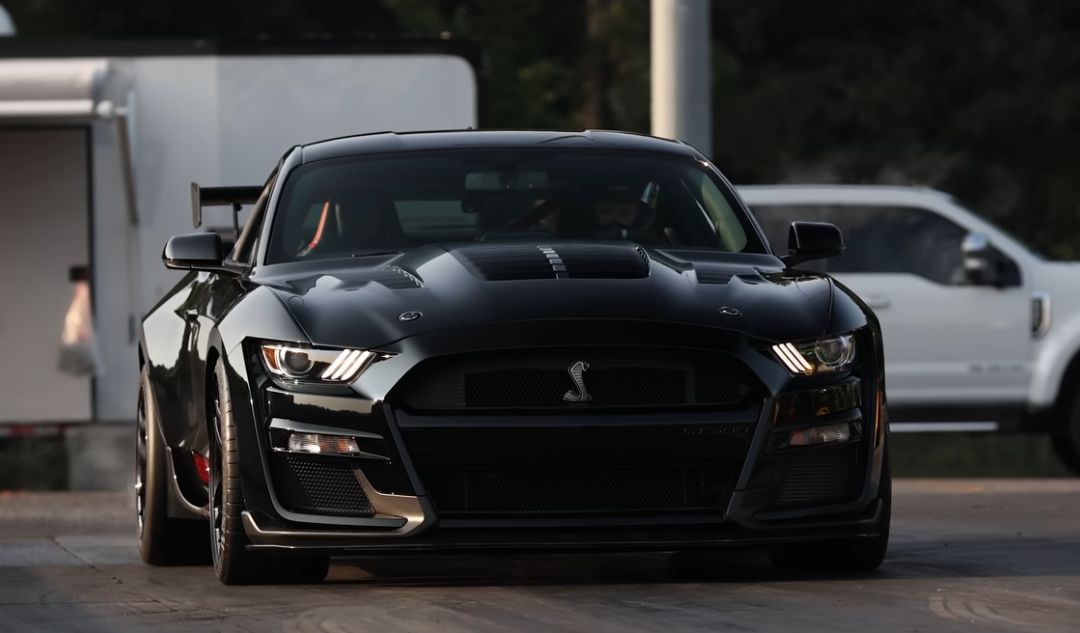 Shelby GT500 CODE RED Quarter Mile Run - 8.59s at 161 MPH!, Shelby American
Shelby GT500 CODE RED Quarter Mile Run - 8.59s at 161 MPH!, Shelby American
Looking Back
In between these official generations were other offerings and some controversies. There were lawsuits over Carroll Shelby’s version of “Eleanor,” a custom 1967 Mustang that the Gone In 60 Seconds (2000) remake featured. Eventually, a judge ruled in favor of Carroll Shelby Licensing.
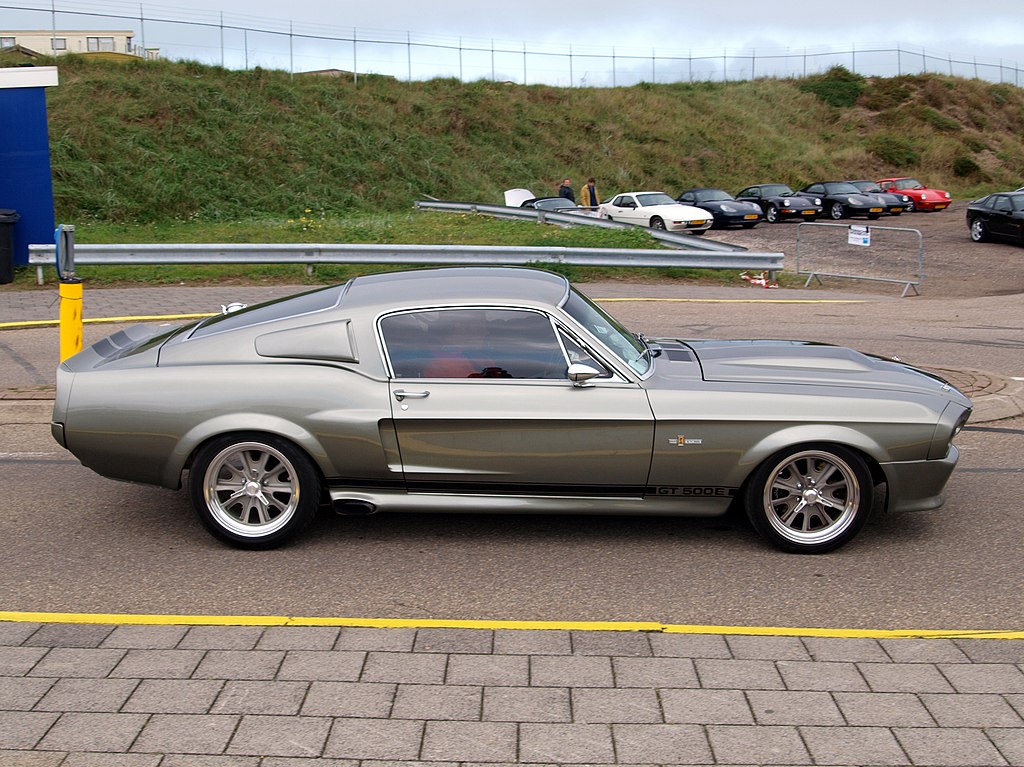 Alf van Beem, CC0, Wikimedia Commons
Alf van Beem, CC0, Wikimedia Commons
Unsatisfactory Performance
And Carroll Shelby’s partner, Unique Performance, created a stir. The company recreated 1960s Shelby Mustangs, but Shelby cut ties in 2007 after customers complained about quality and delivery. A month later, police raided the company over VIN irregularities. It soon went bankrupt.
 Tadekptaku, CC BY-SA 4.0, Wikimedia Commons
Tadekptaku, CC BY-SA 4.0, Wikimedia Commons
Think Big
Carroll Shelby was a Texan who always thought big. Even after a heart defect sidelined his racing career, he kept on speeding ahead with innovative designs that gave Ford Mustangs some Shelby mystique. Although he died in 2012, his Shelby Mustang keeps on racing strong.
You May Also Like:
Why The Ford Mustang II Flopped So Hard
Ford Vs Ferrari Was Never Just About Racing
The Rise And Fall Of An American Icon: The Ford Thunderbird


